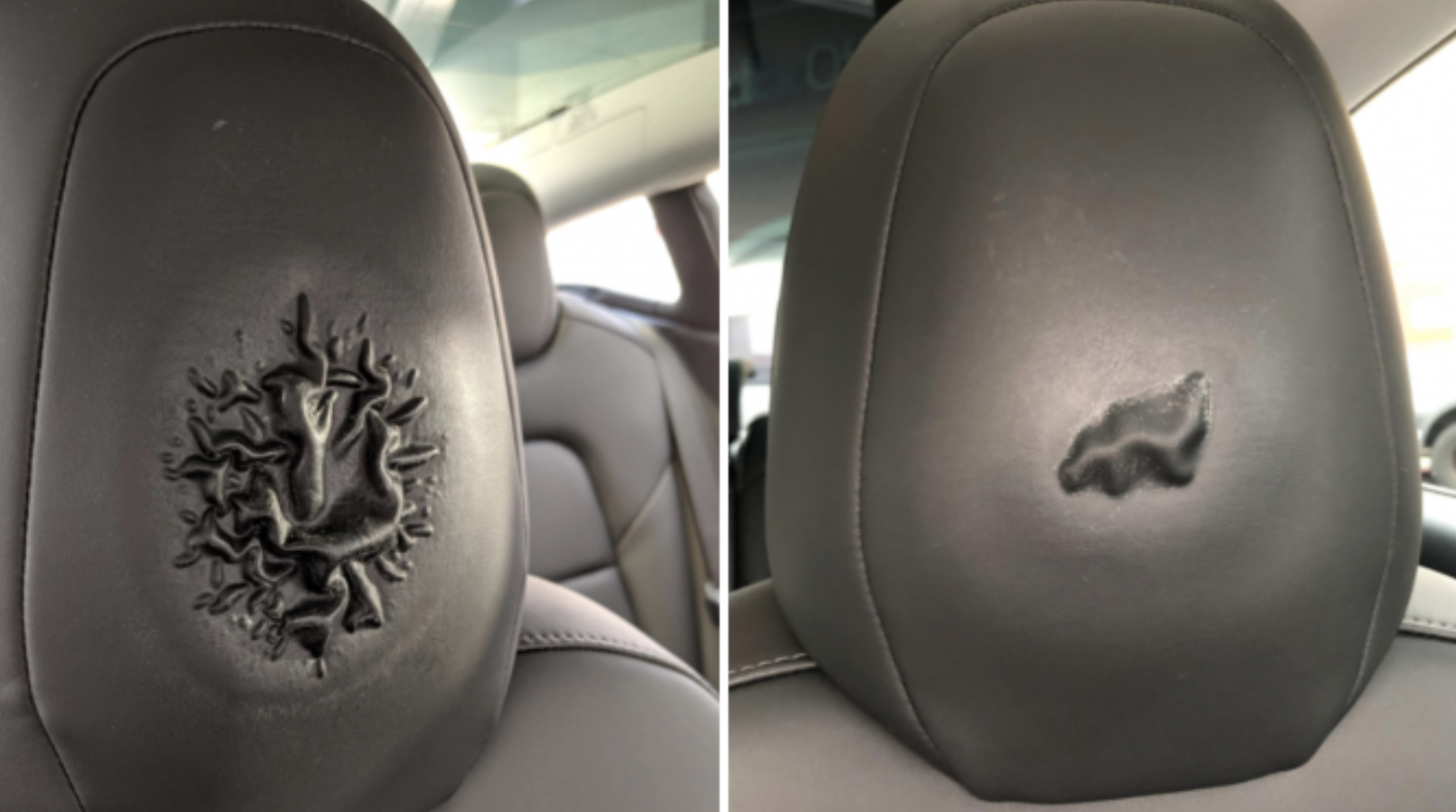Some Tesla Model 3 have experienced damage to the rest of their electric cars’ vegan skin from Canada. Now the Twitter account @DriveTeslaca proposes the solution to the problem.
According to several users who shared their aesthetic problems with the seats of their Model 3, especially the headrests. These seem not to be very friendly to the substances that coexist with specific hair types since the head’s contact area with the seat ends up decomposing in the way we see in the image above.
Tesla Model 3 headrest bubbling? According to Tesla, this is what causes it, and this is how to prevent it https://t.co/gckMffjXoM
— Drive Tesla 🇨🇦 #FSDBetaCanada (@DriveTeslaca) November 24, 2020
When it comes into contact with the faux leather of the Tesla Model 3 seats, the oils that the hair possesses can generate a reaction with the products used to adhere the vegan leather to the headrest padding.
But, for the fusion of the fat from the hair and the products with which the seats are made to produce the images’ result, a specific factor must be present: intense heat.
Extreme heat triggers the reaction.
High temperatures are the triggers for the chemical reaction that causes cosmetic damage. If the Model 3 is parked in a hot sun that triggers the interior temperature, a headrest with greasy hair residue can deteriorate.
For the moment, Tesla has not replaced the part under warranty in one of the cases; an owner has ended up replacing the part for more than 250 dollars. In another case, the owner of a Canadian Model 3 received the following explanation from Tesla’s mobile help desk:
“The root cause is related to vegan polyurethane resin (PUR), which is susceptible to swelling under the action of certain chemicals, some of which are found in cosmetics and head oil within a certain pH spectrum. When there is prolonged contact with the high-temperature chemical (a hot car), the chemical diffuses into the liner, swells, overwhelms the adhesive that holds the liner to the textile, and the liner delaminates—a bubble forms. Chemicals must be on the viscous side to stay on vertical surfaces, which is why creams and gels are generally used. This also means that they have a low vapor pressure and are not volatile, so they don’t evaporate… taking a long time to diffuse into the material if they are not cleaned quickly.”
How to prevent it?
If the option of wearing a hat is out of the equation, the best way to prevent this problem is to keep the headrests clean of oil and other harmful elements. Tesla recommends using baby towels as a quick, inexpensive, and simple solution to keeping your electric cars’ synthetic upholstery clean.
Reducing the fat that remains on the synthetic leather and avoiding leaving the car in the intense summer sun is the best option to avoid suffering the deterioration of the Model 3 seats.

